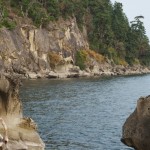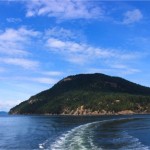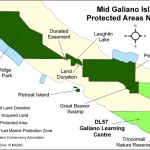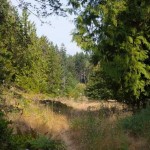By Jon Weller

Courtesy: Jon Weller
Lately, many members of the conservation community have been asking the question of how we resolve the dissonance in our thinking between the goals of conserving ‘nature’ and ‘culture’. One area where this question is being dealt with in an engaging way is within the field of ecological restoration. What the dialogue happening within this field demonstrates is that far from being antagonistic towards each other, as it is often portrayed, the goals of conserving ‘nature’ and ‘culture’ can be intricately intertwined and mutually reinforcing.
Restoration ecology is a practice that has traditionally sought to return disturbed natural environments to what they were before a point of human disturbance. But, this is increasingly recognized as an unlikely goal. On the one hand there is a growing awareness that there has never been an original point of pre-human contact to return to, and secondly, in a world where anthropogenic change is pushing flora and fauna far beyond their historical range it is “futile to try to restore past conditions.”1 Therefore, contemporary restoration ecologists do not aim to ‘recreate’ the past, so much as to reestablish the historical trajectory of an impaired ecosystem in order for it to continue its evolution.

Courtesy: Jon Weller
More than a changing understanding of the role of history, however, the field has also broadened its mandate beyond the natural world. What is being called ‘comprehensive ecological restoration’ is an approach to intervening in ecological systems that takes as its goal the recovery of the entire socio-ecological system. A comprehensive approach recognizes that, if successful, its efforts contribute to the overall well-being of the ecosystem and the societies that rely on them by renewing economic opportunities, rejuvenating traditional cultural practices, and enhancing ecological and social resilience to environmental change.2 Emphasizing this broader picture pushes ecological restoration into the realm of what alternative fields understand as cultural landscape management. Furthermore, a broader mandate injects an important element of transparency, engagement, and communication with citizens and stakeholders to determine the goals and objectives of interventions.
Off the west coast of Canada, on a small island in the Gulf Islands archipelago, The Galiano Conservancy Association offers an exciting model of how traditional nature conservation, can, and is, being transformed by these dialogues and practices. Formed in 1989 with a mission “[t]o preserve, protect and enhance the quality of the human and natural environment” on Galiano Island, the Galiano Conservancy Association was one of BC’s first community-based land trusts.3

Courtsey: Jon Weller
Originally organized as an “instrument for community-based acquisition, management and conservation of land and habitat,” the Conservancy has successfully protected important ecological communities through direct land purchase and cooperative partnerships. It conducts work such as extensive long-term biological monitoring; but it has also grown to take on a broader range of activities than traditional conservation organizations that focus on the preservation of relatively intact ecosystems. This work includes the stewardship and restoration of ecosystems, (much of the island’s land was degraded through intensive logging operations) as well as efforts to educate the public and raise awareness of sustainable human relationships with the natural world. Instead of simply seeing their sites as degraded ecosystems, the Conservancy has embraced the history of human habitation (and degradation), not by preserving it in the sense of a cultural landscape, but rather by documenting it, allowing it to remain, incorporating it into educational programming, and refashioning it in contemporary ways such as establishing food forests on earlier agricultural land.

Courtsey: Jon Weller
The management of a multi-use landscapes is most certainly a complex and complicated process, but because of the kind of activities that are available it is possible, in the words of Conservancy Board Member Lorne Wilkinson, to “begin to create a model of how we might bring together natural systems and human systems in ways that are mutually reinforcing” and serves also to educate “people in their relationship to the natural world.”4 More than simply a protected natural or cultural landscape, the Conservancy’s properties are an ongoing example of how the restoration and conservation of natural and cultural systems can be integrated in a sustainable way. Such a model for community-led restoration of ecological systems, where the cultural connections to the land are deeply connected to all of the activities, offers a compelling case for reconciling the division between nature and culture.
1) Luis Balaguer, Adrián Escudero, José F. Martín-Duque, Ignacio Mola, and James Aronson, “The historical reference in restoration ecology: Re-defining a cornerstone concept,” Biological Conservation 176 (2014): 13.
2) Society for Ecological Restoration International Science & Policy Working Group, The SER International Primer on Ecological Restoration, Society for Ecological Restoration International (Tucson, AZ, 2004)
3) Galiano Conservancy Association, “Our Mission.” http://galianoconservancy.ca/our-mission#Purposes (accessed 18 June 2015)
4) Deborah Curran, Resource Guide to Collaborative Conservation Planning (Galiano, BC: Galiano Conservancy Association, 2013), 8.
Jon Weller is a researcher and heritage advocate from the University of Victoria where he studies alternative approaches for culture-based land and resource management. This article was first presented as a paper at the University of Massachusetts’ 2016 conference ‘Nature/Culture: Heritage in Context’ in Prague


